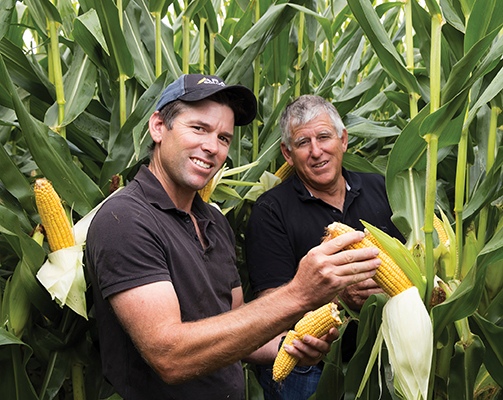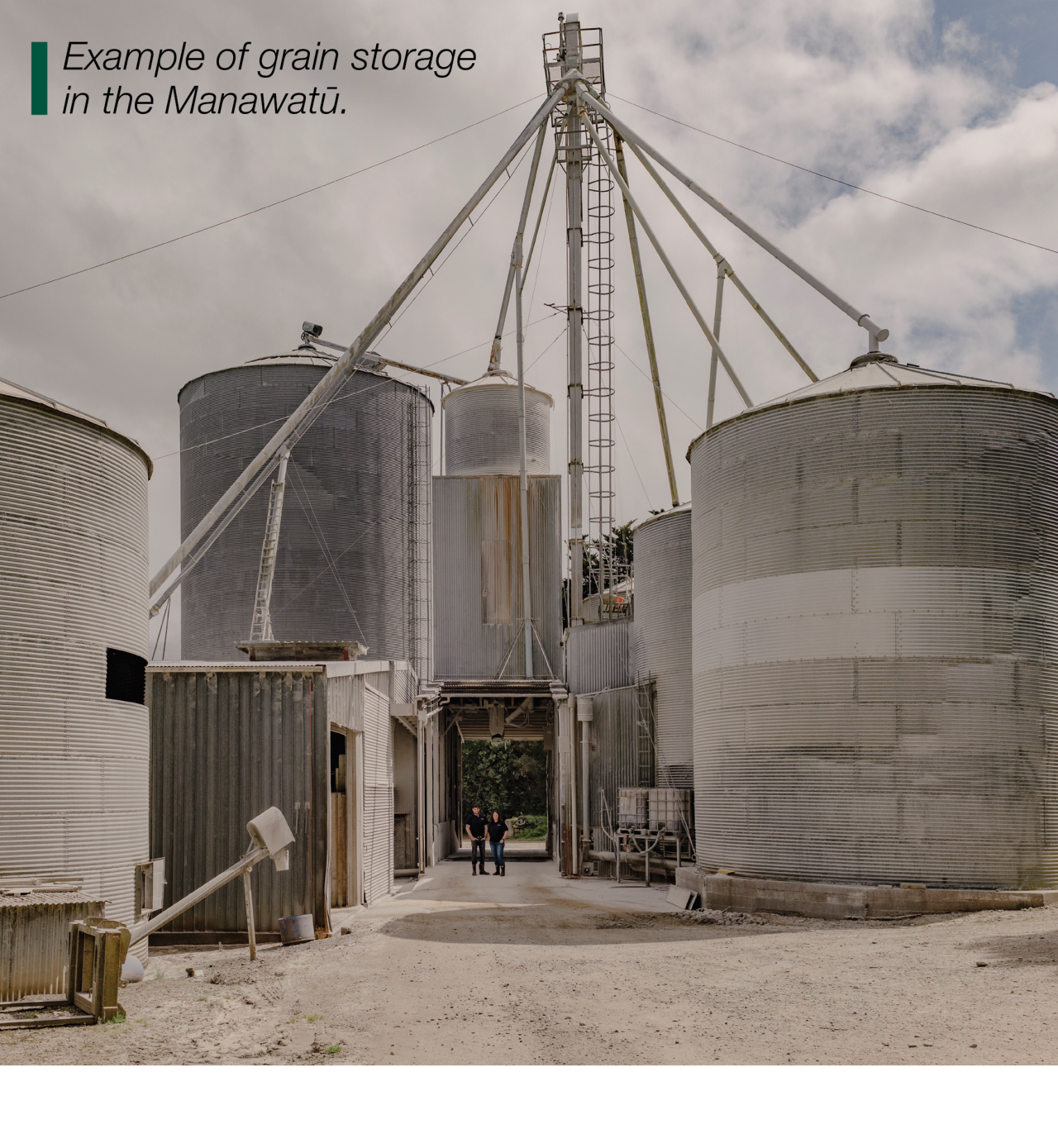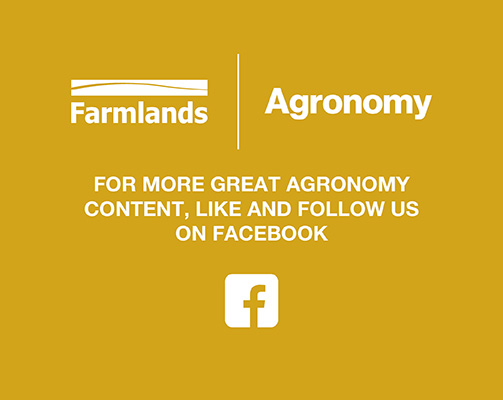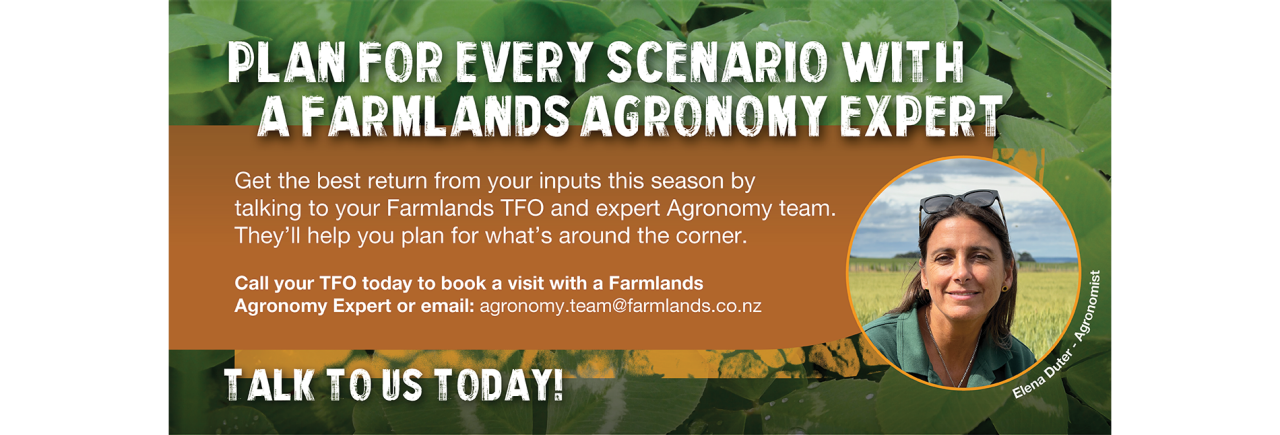

Amaizing results for growers
With investments in agronomy and advances in harvesting technology, Farmlands is supporting arable farmers across New Zealand to adapt to changing industry demands and innovate on-farm.
With 30 years’ experience in the arable sector, Whanganui-based Farmlands TFO Jason Wing says one of the biggest changes he has witnessed during his time in the industry is around the technology used for harvesting and processing grain. Not only are the modern combine harvesters bigger, they have features like yield monitoring and GPS systems. “When a farmer is sitting in the combine harvester, it can now tell them exactly what the yield's doing, what the moisture is. We never knew the back in the day when I started out. You had no idea what the yield was until it went to the silos and got weighed.”
Another change has been around the end users of the grain, with New Zealand’s dairy sector moving to maximise productivity by supplementing the grass base of their cows’ diet with other feed sources. Jason says there’s a real science behind on-farm nutrition, and this is changing what grain growers produce. “We've got very good nutrition specialists in Farmlands, and I think a lot of dairy farmers now are relying on that support. We've got specialists in the field – from growing the grain right through to harvest and the end use, so Farmlands has got that support all the way through.”
Farmlands is investing in the agronomy space, by growing the knowledge and skills of the team, right across the country. This has happened through two solid programmes, Cultivate and AgronoME, with ongoing arable training run in all regions. In this way Farmlands ensures that technical support on-farm is always available to shareholders, with a focus on producing high-value food and primary products, creating a sustainable seed-to-feed approach.
Great grower
One of the shareholders Jason works closely with is Simon Nitschke of Marton-based Arable Solutions. Few Kiwis know more about growing grain than Simon, who won both “Maize Farmer of the Year” and “Arable Farmer of the Year” at the 2024 Arable Awards in Christchurch. Arable Solutions processes about 10,000 tonnes of grain per year and has another 1,500-tonne silo going up on its main site at the moment. “We tend to work very closely with the growers, we condition the grain and have it there available for them,” Simon says. “So as long as we can all make it work together, it tends to go pretty well.”
Of their 400 hectares of crops, about 200 hectares is currently used for maize, with 100 hectares each for barley and wheat. Simon says the soil in the area is excellent for growing grain, and although they have no irrigation, they usually get plenty of rain. “We concentrate a lot of our high-yielding maize and wheat on very loamy soil, so very high fertility, river silts and volcanic ash. And then a lot of the smaller grain tends to go on the heavy clay soils that are a bit later to get on. There’s still good fertility right through, but it depends how much water carrying capacity they’ve got.”

He says maize has been coming into its own recently around the Rangitikei-Manawatu region, which has managed to avoid the heavy weather events that have struck other parts of the country. “The last few years we've had a really mild, easy growing period and we’ve getting increased heat units, which is really good for maize, so we’ve been seeing those high yields come out. “Last year was a very good wheat growing season; it likes a longer season without the heavy rainfall. It does well with a bit more of the warm weather, whereas the barley tends to enjoy the cooler, slower growing conditions.”
These differences mean it’s hard to have a great harvest for all three crops, but it at least offers some diversification and ensures at least one of the three usually does well each season. “We usually never have a good maize season when we have a good barley season, but it actually tended to work itself pretty well last year.” “The gross margins are better on maize and the hybrids suit our country. We're getting 1-2% per year genetic gains from the Pioneer hybrids, which doesn't sound a lot, but it accumulates.”



